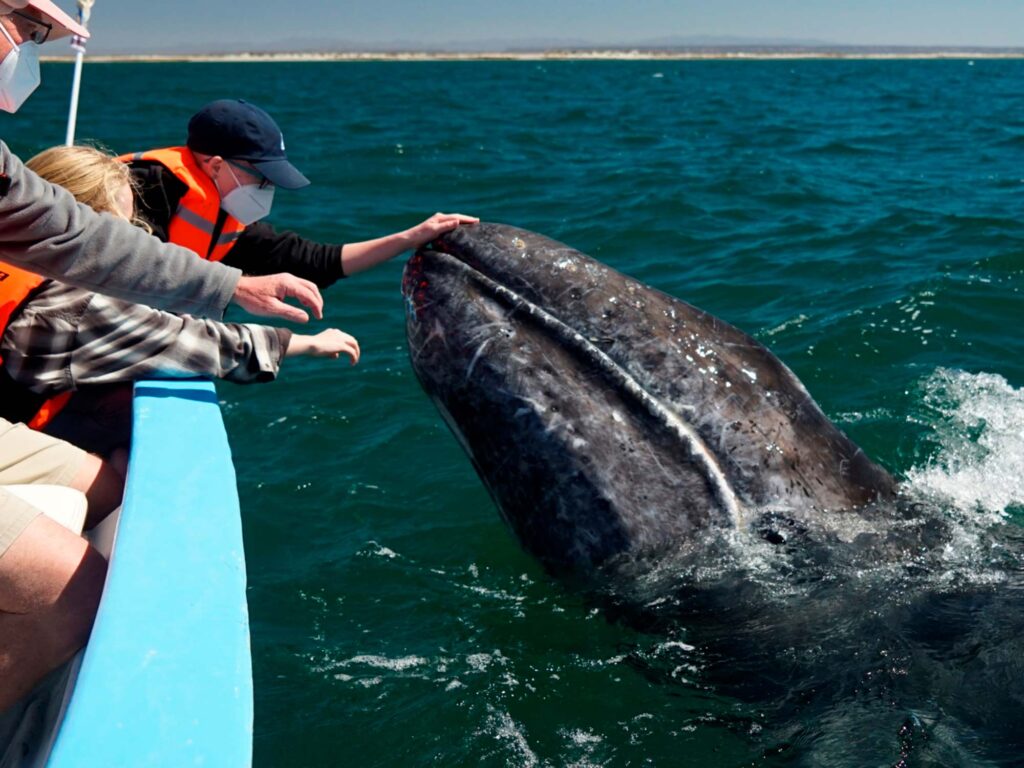
“Rammed by a whale!” That was a recent clickbait title in an email newsletter, after a sailboat headed to French Polynesia from the Galápagos sank (the humans are all OK). Yes, it was whale versus boat, but who really benefits from hyperbole suggesting the whale attacked? How do we know the real story?
The incident prompted my husband, Jamie, and me to reflect on some of the many encounters with cetaceans we’ve had over the years on our Stevens 47 Totem. Although our Pacific Northwest home waters of the Salish Sea are home to many whales, we didn’t spot a single one in our thousands of miles of pre-cruising sailing and our years logged commuting by ferry. But as cruisers, our experiences with these massive creatures have been numerous and magical. They’re a reminder that our lives include leviathan encounters we can never take for granted.
Whale-spotting
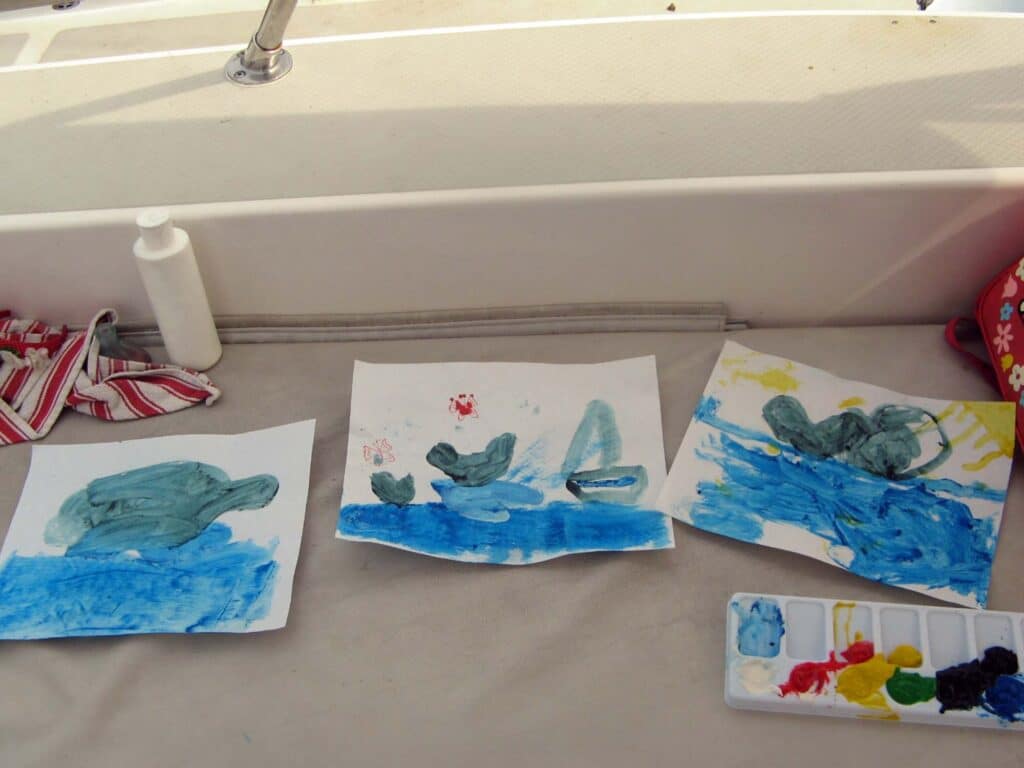
Mexico has provided whale encounters more numerous than I can remember. The migration of cruising boats down the west coast aligns pretty well with the migration of humpback whales. Bahía de Banderas is a destination for an estimated 500 humpbacks annually, and a hub for cruisers in wintertime. At anchor there, we were treated to routine afternoon breaching sessions that Jamie dubbed “The Whale Show.” We never tired of stopping whatever we were doing to enjoy it. These displays became so routine that the kids couldn’t always be coaxed to join us in the cockpit. In the mornings, we’d wake to the sound of whale song, which we could hear through the hull.
During our first hurricane season in the Sea of Cortez, fin whales—the second-longest species, after blue whales—fed in the channel aptly named Canal de Ballenas (“whale channel”) between Baja and Isla Coronado. We logged many nights there at anchor. The whale calls could be heard through the hull there, too. In a magical twist, the kids’ quiet time one afternoon turned into “press your ears to the cabin sole” to listen to the whales singing.
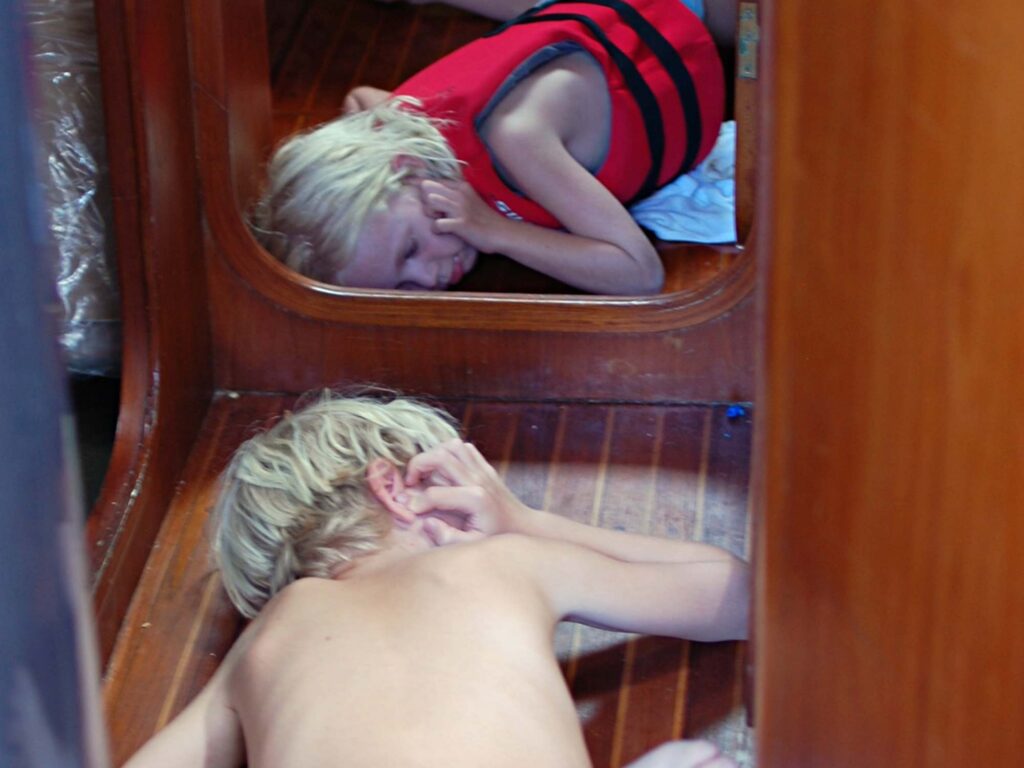
We had one slightly shocking encounter when a fin whale gently surfaced next to our dinghy during an evening drift. No drama, but an unforgettable close-up.
Another time, we completed a starboard-to-starboard pass with a whale roughly double Totem’s 47-foot length overall. We were sailing south in the Sea of Cortez late one fall, when we saw the blue whale, the largest creature on the planet. Oh, and Jamie was treated to a spectacular breach from what we think was a Bryde’s whale near Loreto that year.
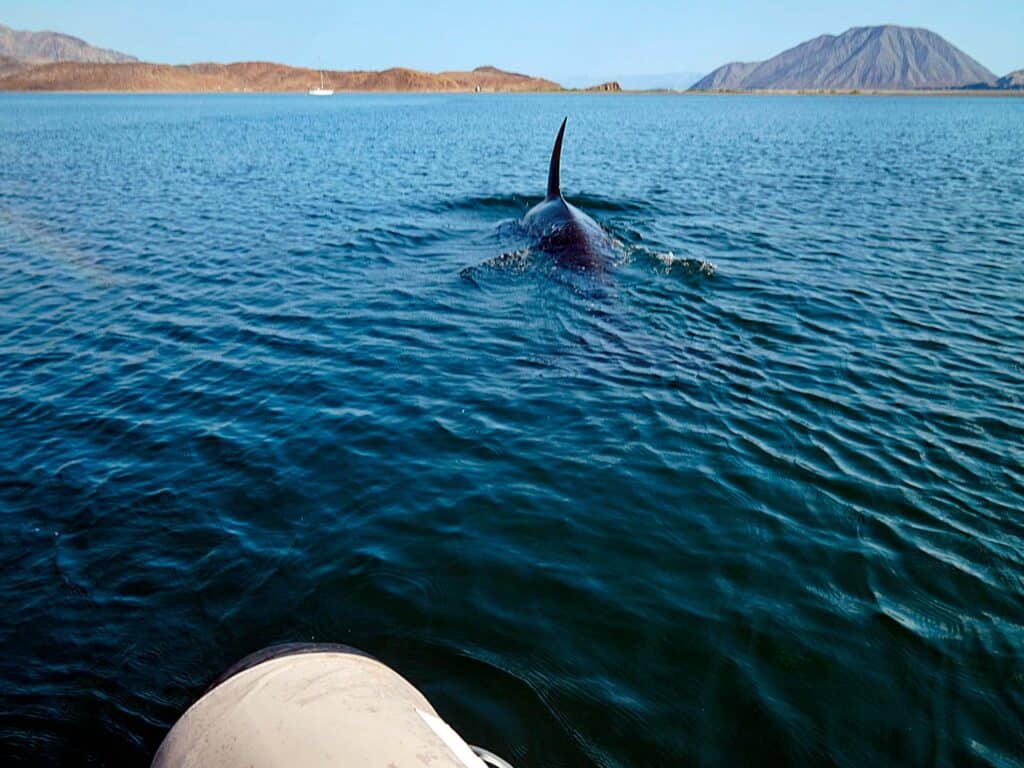
We were out looking for the fishy kind of whale—whale sharks—around Bahía de los Ángeles one summer when a tall, narrow fin in the distance tipped us off to migrating orcas. Finally, thousands of miles from our home waters, we were treated to a small pod passing nearby. One passed directly under the dinghy in a move that some people might have interpreted as threatening, but that we felt was pretty playful. That whale departed with a tail slap that splashed us all.
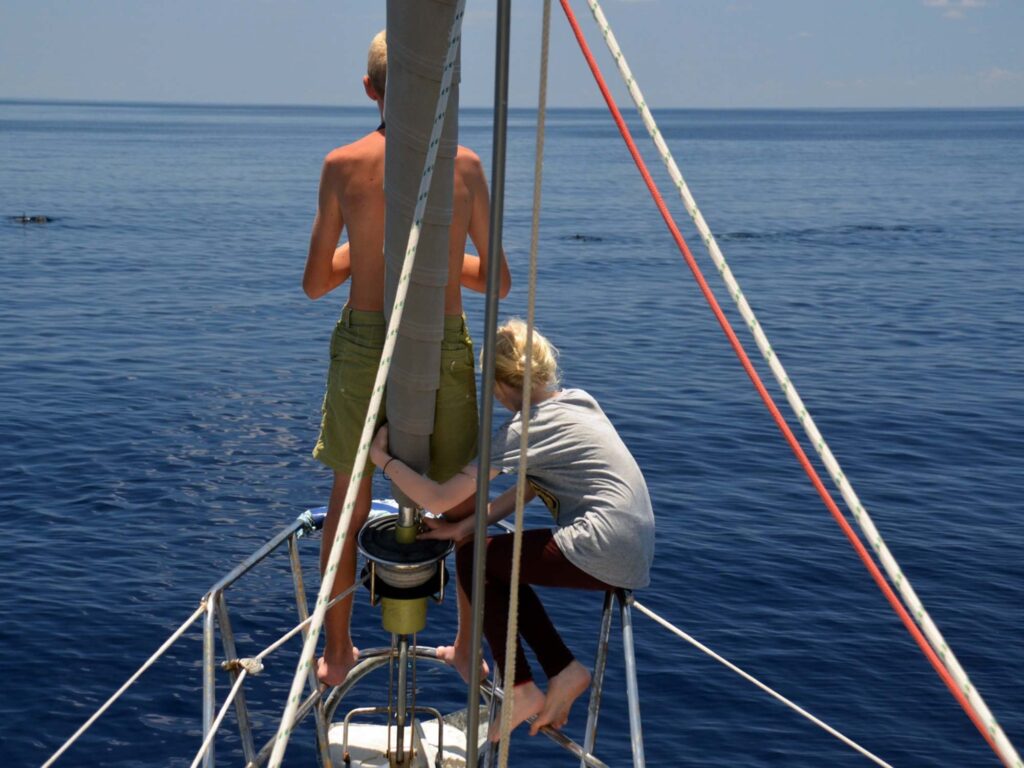
Those examples are cherry-picked from many others, most beyond Mexico’s borders, like the time we saw the distinctive, blocky profile of sperm whales between Thailand and Sri Lanka. A pod of pilot whales danced in front of us in the Maldives. We saw humpbacks that skirted around basalt pillars in Madagascar.
Extra-close encounters
A few cetacean encounters were extra close. In Papua New Guinea’s Hermit islands, during a remarkable series of days, we helped residents assess why a pod of false killer whales had taken up residence in their lagoon. Ferrying leaders out to take notes, and to hang off our dinghy in the water as the magnificent creature hurtled by a few feet away, we felt keenly observed (and very small).
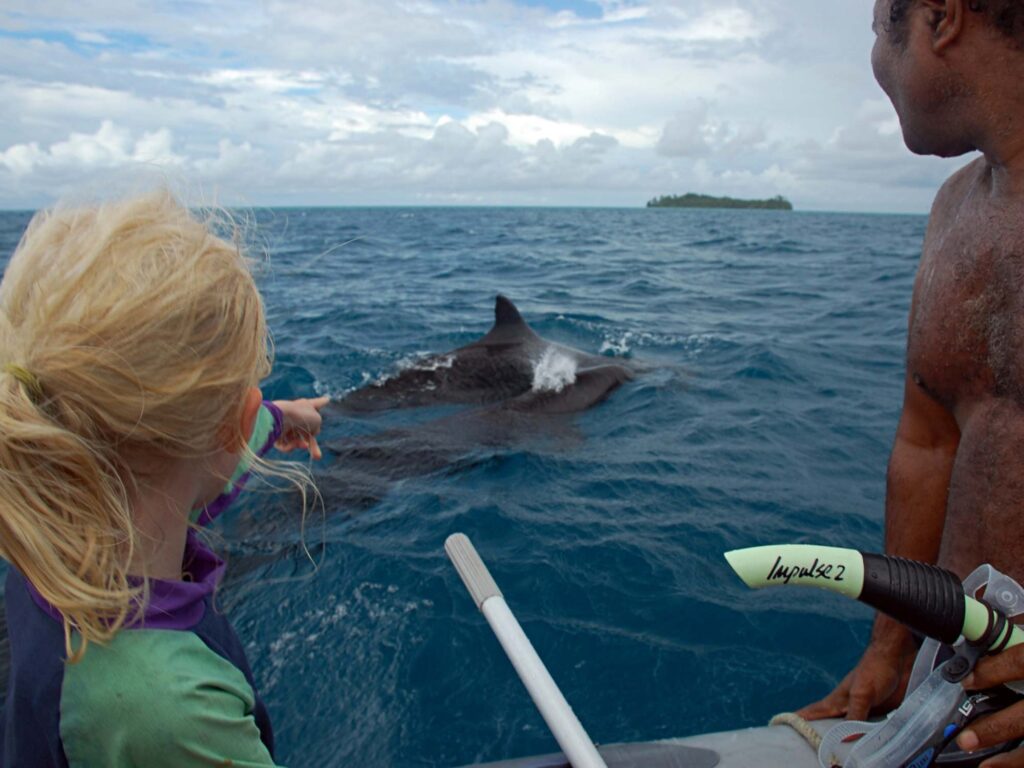
Similarly memorable: the day we spent floating among gray-whale mothers and calves, near their nursery. With a mother parked immediately below us, her curious calf first spyhopped, then rode up her back for an even closer view. Magical.
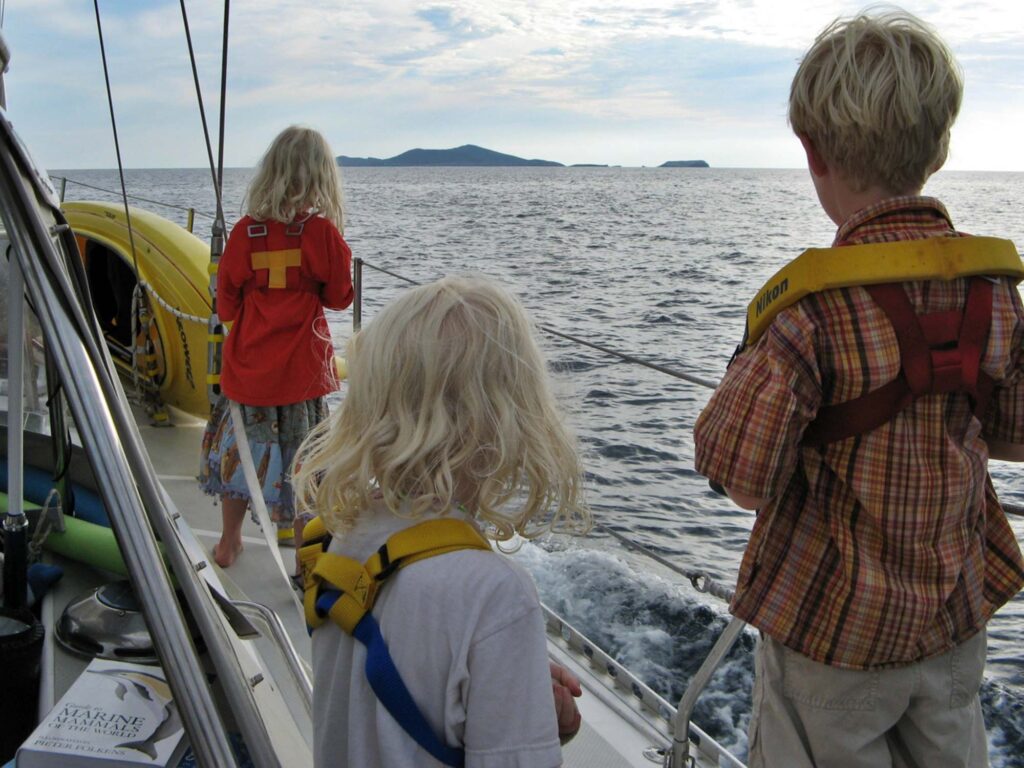
The time we hit a whale
Not all whale encounters have been storybook experiences. Outside southern Baja at 4 o’clock one morning, Totem shuddered to a near halt, lifted up and slid sideways. We did not get a visual on the whale, but we don’t doubt that’s what it was. The humpback highway runs off the coast of Baja, and we were entering peak migration season. I was shaken out of my off-watch berth. Jamie raced around with shaky knees, checking bilges for water incursion.
A few months after that close call, we approached a tricky spot as light was fading. We wouldn’t get multiple chances to set the hook in the fair-weather anchorage at Isla Isabel, and as we were arriving, so were several groups of whales. Trying to steer clear of multiple mamas and calves in close proximity can be stressful. As a new cruiser, I may not have held in my stress very well that day.
Sailing past Cape Town, South Africa, gave us similarly jangling nerves as multiple pods moved in varying directions near Totem. What we believe was a southern right whale appeared on our port side and dove neatly underneath, passing under Totem’s rudder without breaking rhythm. It rolled to give Jamie a one-eyed glare as we held our collective breath.
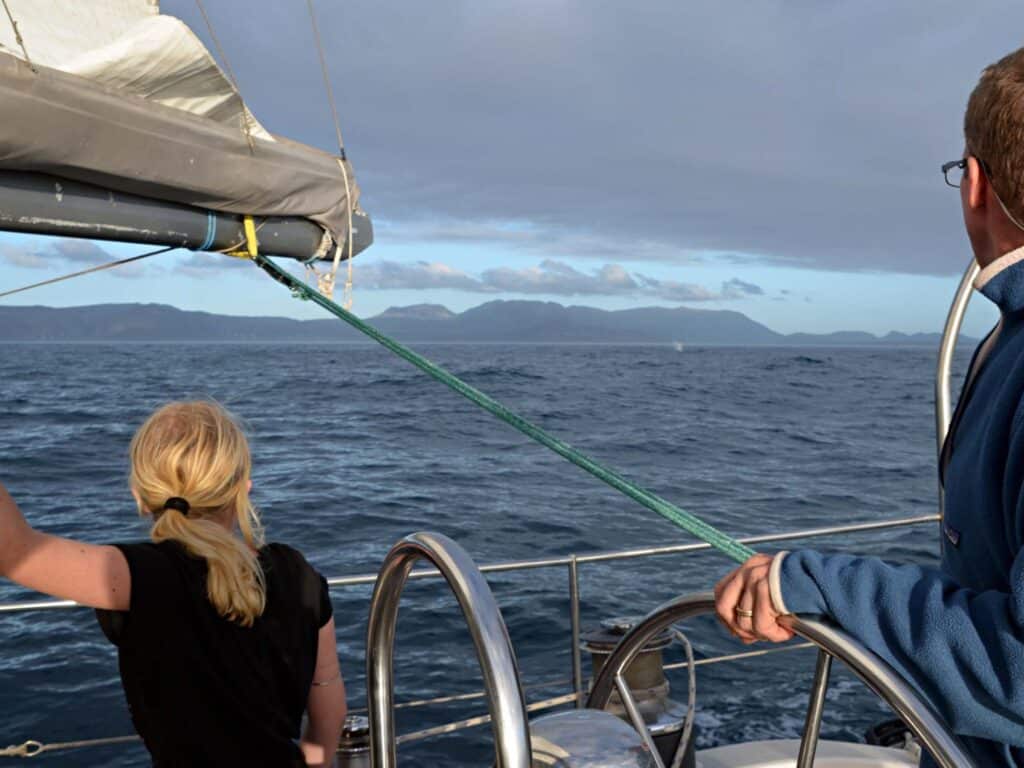
During our last passage in that region, on watch under a moonless night sky, I heard and felt the impact of a whale breaching uncomfortably close by. The night was so inky, I couldn’t tell where the whale was. A boat length? Two? If there was any doubt, a loud, stinky exhale quelled it. My heart raced while listening to a series of additional breaches, staring breathlessly, looking out into the dark.
There are themes here: having a healthy respect for whales, and using our senses as critical tools to avoid them. The latter can be difficult, even in the deprivation of darkness. But when proximity happens in daylight, one off-label use of a laser range finder is to track movement or ensure proper distance (800 feet is standard).
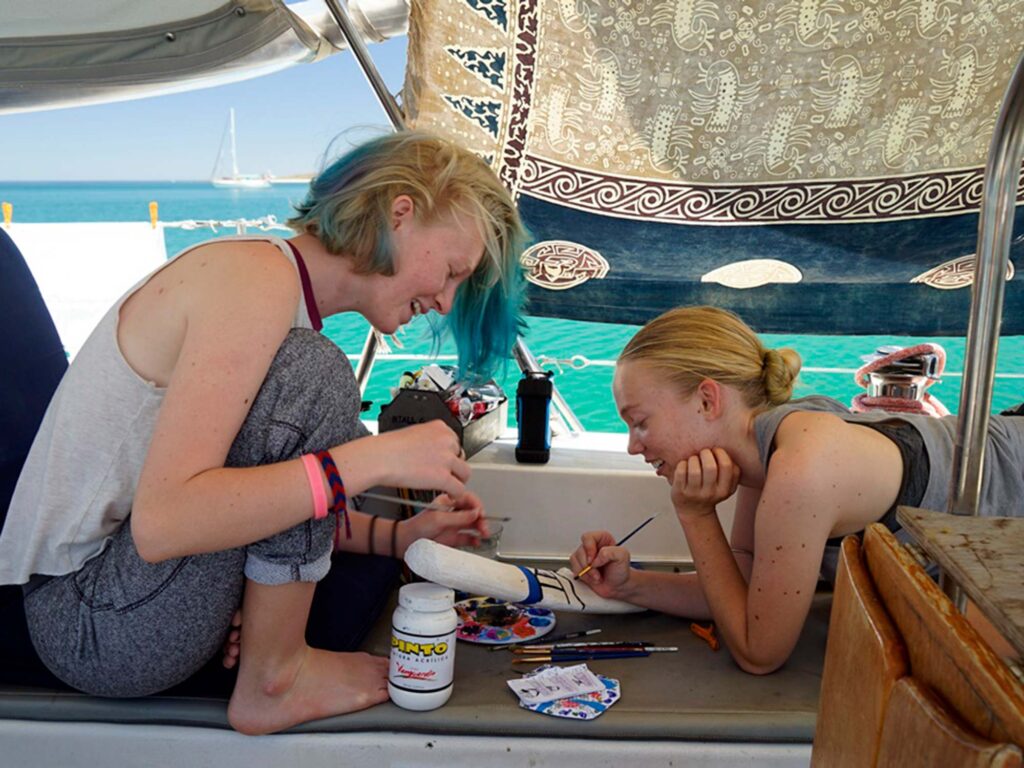
The sinking of Raindancer
On March 13, the Kelly Peterson 44 Raindancer collided with a whale between Galápagos and French Polynesia. There’s nothing to suggest the incident was anything but an unfortunate accident that humans and surely the whale would have preferred to avoid. But with words like “ramming” in the headlines, there’s handwringing in cruising forums about the personal risk of hitting a whale.
There is one corner of the world where this is a legit risk (orcas snacking on rudders along the Atlantic coasts of France, Spain and Portugal), but there may be just enough media circulating to make it feel like a realistic possibility everywhere. It’s simply not. The news coverage irks me because Jamie and I land strongly on a bias to help folks realistically anticipate cruising, and the cheap headlines cast fear, uncertainty and doubt that would give some would-be cruisers pause.
Instead, what should be highlighted in the forums and articles on Raindancer is how the reaction to the collision and the sinking of the sailboat is a showcase of seamanship and technology coming together for a swift, safe rescue. The outcome here was exceptional in ways that are earned through proper preparation, with the backup of emergency systems. And that the crew successfully took a preparation approach similar to the one we took in redesigning our ditch kit (stream our seminar about what to put in your ditch kit): a focus on communications equipment and ease of disembarking.
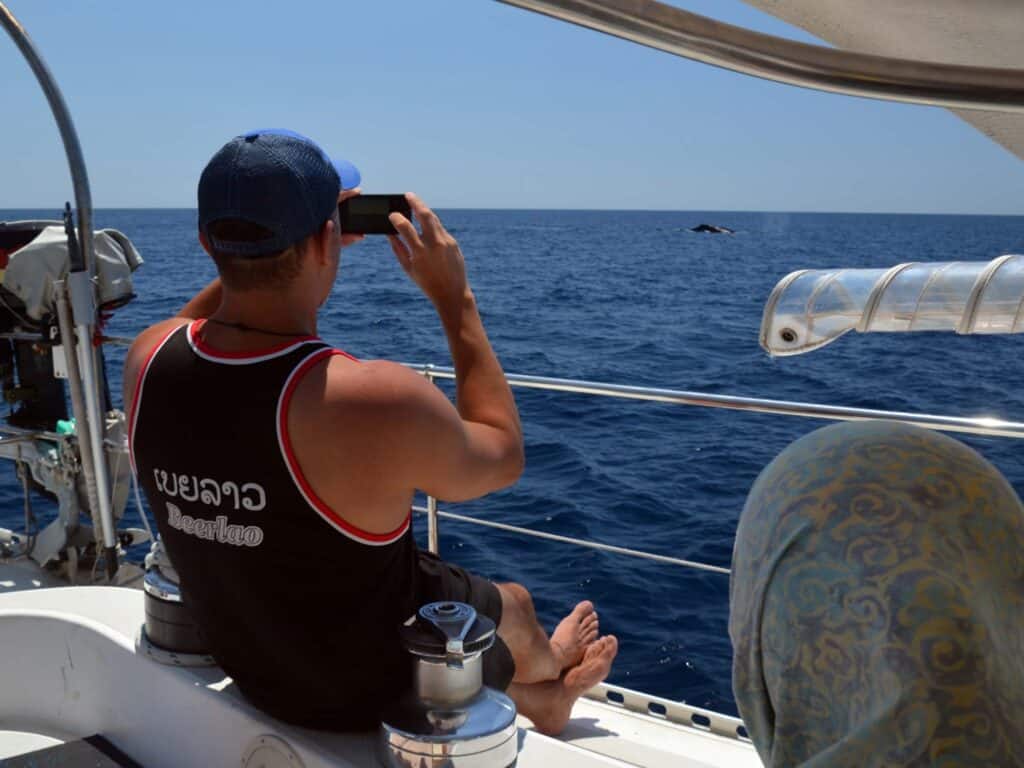
After the collision, the captain set off an EPIRB, which alerted officials in Peru, who contacted the USCG’s rescue coordination center in Alameda, California. From their life raft, Raindancer’s crew used an Iridium GO, a SPOT tracker, and a PLB which transmitted both GPS and AIS. A parachute flare, visible at night, was activated when the rescue vessel, sailboat Rolling Stone, was on approach. The incident also demonstrated how Starlink enabled swift triangulation of private vessels rendering assistance, allowing other boats to communicate in real time and facilitate updates. Raindancer’s crew were rescued in an incredibly brief 10 hours.








